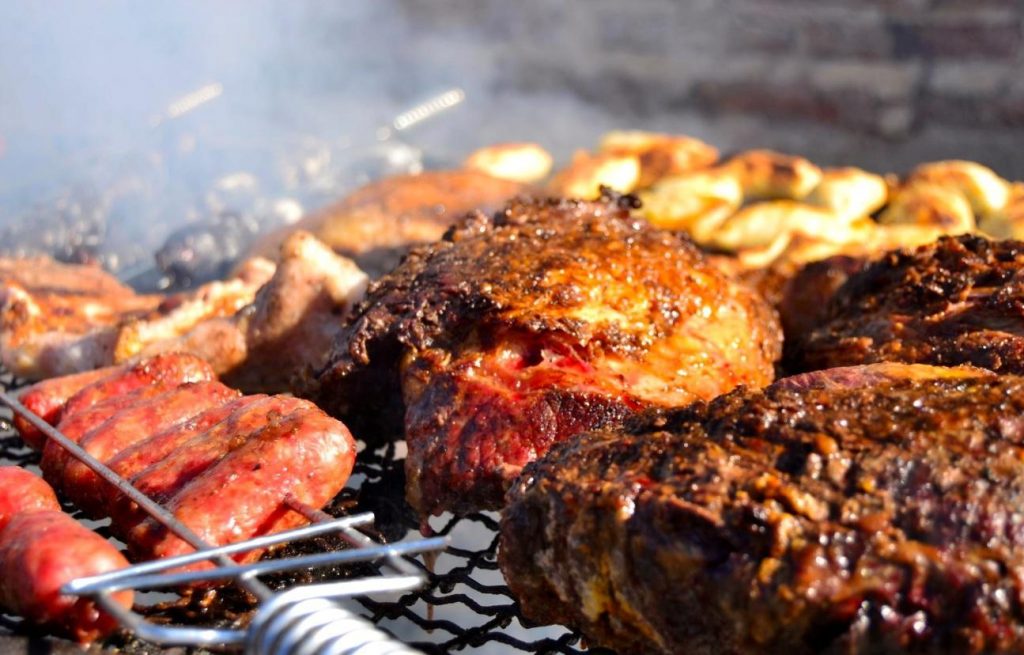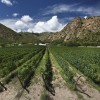On the floor of a courtyard in Salta, on a farm in Mendoza, on a balcony in Buenos Aires. There are no obstacles for a barbecue in Argentina. Wherever possible and where the climate allows it, the Argentines light the fire and put the meat on the grill. The asado, however, recognises some codes and subtleties that make it more than merely cooking meat. Not surprisingly, both Francis Mallmann and Ariel Rodríguez Palacios, two of the most prominent TV chefs, have written books on the art of grilling in recent years, which have become bestsellers both in Argentina and abroad.
Among the things that stand out when it comes to the Argentine way of barbecuing, and by far the most difficult to achieve, is timing. Because from the minute you start the fire until the table is set, several hours will have passed. A reasonable amount of time to achieve the right fusion between the fats, salt and flavour which the smoke gives to the meat. Time to talk, to catch up with friends, tell jokes, comment on the grilling techniques of the asador and which wine everyone has brought. All the while the meat is slowly cooking, and you have time for friends and family and red wine is an essential part of that. So what is an asado in Argentina like?
The prelude to the fire
Asados in Argentina have a person in charge. Generally, the homeowner, buys the meat in his friendly local butcher -because he knows him and trusts him – and the vegetables and the bread. As a responsible host, he plans it in detail. For a good asado, he calculates half a kilo of meat per adult and chooses a selection cuts to have variety.
Some pork sausages, a flank steak, ribs, skirt steaks and some other delicacies. Every asador has his own: chitterlings, sweetbreads, kidneys, offal, all seasoned to your taste. If he is an old connoisseur, he’ll also buy a case of wine in case the day stretches out. Although the drinks are usually the guest’s responsibility. With this simple sharing mechanism, two fundamental things are established: the role of the cook on one hand, and the jury of notables on the other. The latter will be responsible for judging the ability of the cook and plying him with good wines.
The fire and its variants
There are many techniques and ways to make a fire in Argentina. In dry climates they use native, hard firewood which produces powerful embers, whereas in humid climates coal is used. But a trained asador always uses some special timber to provide flavour to the meat.
Since we were cavemen and women, fire has been captivating us, and here it becomes the focal point of the meeting. As soon as the fire is lit the first bottle is uncorked. It is never the best wine of the meeting, that is reserved for when the meat is ready, but a good one to warm the body. Now the picadita (cheese and salami board) appears, no more than a couple of cheeses and some chorizo, so the wine is not alone at the table.
Grilled meat
Journalist Michael Pollan published a book last year entitled Cooking. A natural history of the transformation, which devotes 124 pages to justify the fact that grilled meat is the best way to cook. He reveals surprising secrets about the art of barbecuing, which would amaze a New Yorker or a Spaniard, but would not raise an eyebrow in Argentina.
Pollan argues that if the meat is cooked slowly, mastering the art of fire, it can be juicy and full of flavour. And that is precisely what happens in every Argentine asado. The asador spreads a few embers under the grill and places the meat on the gentle flameless heat. His responsibility is to maintain the heat so the meat is cooked slowly until the juices start to flow, turning and adjusting the amount of embers. He uses his expertise to control the cooking while participating in the lively conversation and the picadita. In fact, one of the key moments of all asados in Argentina is the point at which one of the guests like a judge with his own laws, points something out that he believes is not well done. It is part of folklore. And all asadors know how to boast or argue about their technique.
The right point
In Argentina, there are provinces that eat the asado well done, as in Mendoza and San Juan, and others which prefer it juicy, as in the province of Buenos Aires. Whatever the point, one thing is certain: already seated at the table, the asador serves the various cuts on a tray according to a precise calculation of possibilities.
First the chorizos (sausages), then the offal and finally the cuts of meat. The reason is not simple to explain. Children fill up fast on the first few bites, while the specialties arrive for the adults as precious morsels that require a special palate. After this the meat is served in stages, but the order is very personal: a portion of flank steak, another of skirt, another of ribs, so that everyone is eating similar pieces.
That’s when the wine gains prominence. With a peaceful appetite, the best reds are uncorked. Generally, Malbec or Cabernet Sauvignon, or a blend of them, which have structure to accompany the beef. And wether the wine is liked or not it is subjected to the judgment of the other guests.
Like the cook, the guest also gets his turn. And with this simple mechanism of give and take, the asado progresses. They can stretch out over four hours or more, two for cooking, one for eating and another for relaxing after the meal, all of which usually occupies the whole afternoon.
With the wine flowing, a full belly and a happy heart – like the saying goes -, the asado continues its erratic course until late afternoon, either in the living room of a house, in the yard under the trees or at the grill of some club.
Photo: http://blog.yasabe.com/



